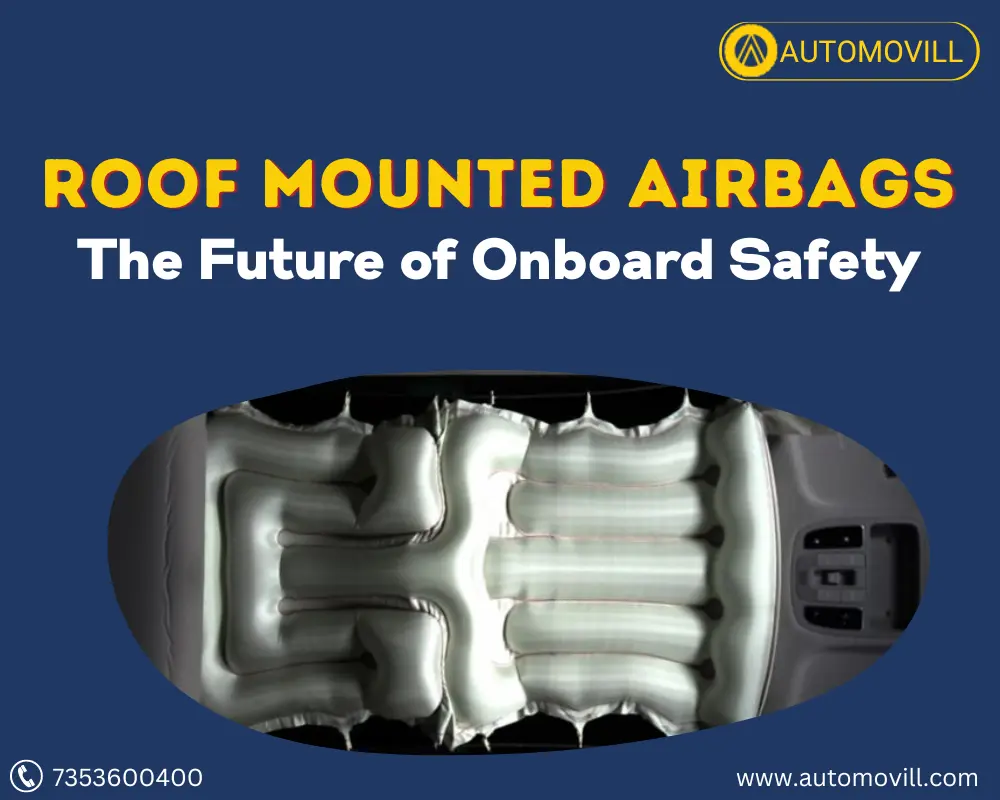
An automobile’s roof airbag is a restraint system designed to keep passengers safe in the event of an accident. In the age of driverless vehicles, this technology will see widespread adoption.
With the advent of the mass production of automobiles in the 1980s, airbags became an integral part of vehicle safety. The airbag in your car inflates into a balloon-like cushion when sensors detect an impact. The second-generation ‘Depowered’ airbag, developed by the auto industry to reduce airbag injuries, is 30 percent softer than its predecessor. Then it progressed into more sophisticated models like the Dual Stage airbag and the Advanced airbag, which are able to deploy with varying degrees of force depending on the passenger’s weight.
These measures alone are insufficient to eliminate the risk of crash-related injuries. The occupants of an automobile that has flipped would suffer injuries from every angle. Airbags in the front and sides won’t be enough to keep everyone safe. In the event of an accident, passengers may also be hurt if they are ejected through the sunroof. About 10% of the 13,700 occupants of vehicles involved in subversive accidents in North America between 2000 and 2015 were ejected through the sunroof, and 2,400 of those occupants escaped the vehicle.
The U.S. National Highway Traffic Safety Administration (NHTSA) said that tests conducted under a variety of scenarios demonstrated the effectiveness of the roof airbag in the Hyundai Mobis in preventing egress through the sunroof. Roof airbags deploy in 0.08 seconds to prevent passengers from striking their heads on the sunroof during a rollover accident, significantly lowering the risk of serious head and neck injuries.
How Does it Work?
When it senses a collision or rollover, the sensor that is mounted all around the sunroof detonates the airbag in the vehicle. Silicone is used to coat the airbag so that it can keep its inflated shape for up to six seconds. The deployment speed of the roof airbag is increased by stainless wires, which helps the roof airbag protect passengers more effectively and has proven to be useful in stopping passengers with sunroofs from exiting the vehicle. Roof airbags deploy in 0.08 secs in the case of a rollover accident. These airbags protect passengers from flying off the sunroof, which in turn reduces the number of injuries sustained.
Because of the sensors, we can be sure that the airbags have been deployed properly. The sensing unit of this system is what gathers data from the many sensors in the vehicle in real-time. This data includes information about the severity and kind of accident, as well as the use of seatbelts and the size of the occupants. After that, it decides which restraint systems, such as strap pump sets, airbags, and roof airbags, are the safest and most effective.
In the event that the vehicle rolls over, passengers are still at risk of suffering fatal wounds from the roof of the car, despite the fact that the seats have been strategically placed across multiple locations. At this point, the importance of a roof airbag cannot be overstated. In the event that a vehicle rolls over, passengers may be prevented from escaping the vehicle through the sunroof or from suffering serious injuries if airbags were installed in the roof. These airbags would inflate in a matter of milliseconds.
Footnote
Even Ford has applied for a patent on Roof Mounted airbags, which are currently in the process of being developed. According to the specifics of the patent, the airbag will be installed in modules that resemble rings directly over each passenger seat. It is likely that these airbags will make their debut on SUVs given their positioning, as SUVs often have adequate headspace for the airbag to deploy properly. It turns out that we were talking about roof-mounted airbags. Since this technology is still in the research and development stage, roof-mounted airbags won’t be available for some time; however, it is an encouraging step toward the development of more advanced safety equipment.
